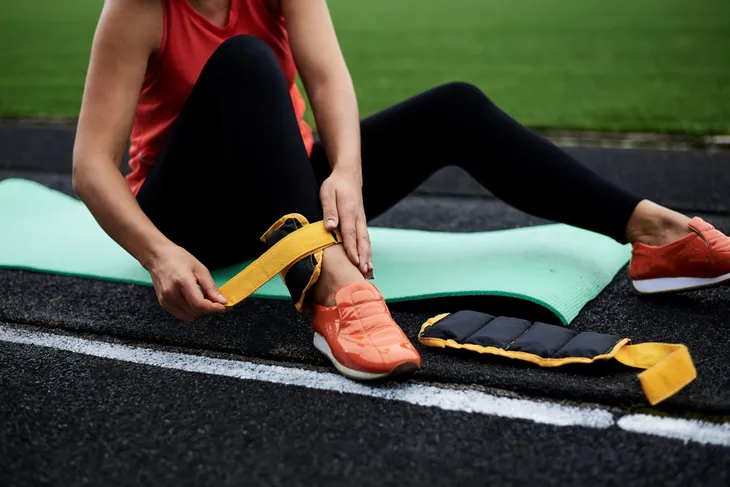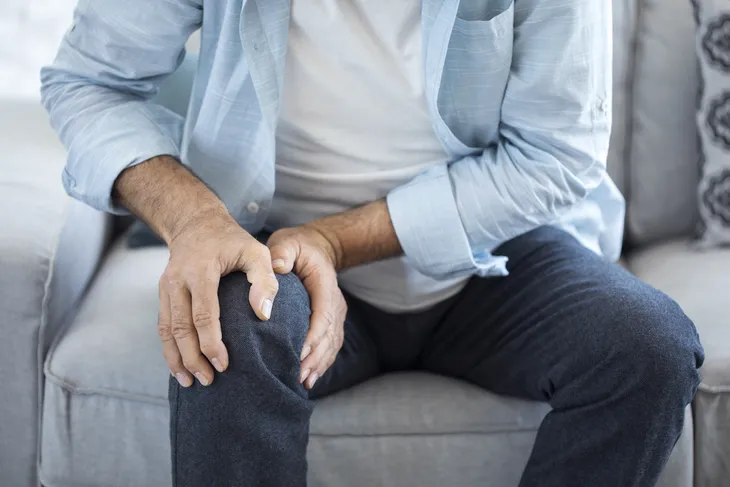The strategy of walking with weights has been around for ages. It’s not uncommon to see someone walking on the treadmill while holding onto dumbells, wearing ankle weights attached to their legs, or wearing a weighted vest. You may have even seen people walking around your neighborhood doing the same thing.
As a physiotherapist, I’m often asked if people are really onto something by adding this extra weight. Is there really any additional benefit to strapping more weight to your body when walking? If there are benefits, are there any risks? In this article, I will break down both the benefits and the risks of walking with weights so you can decide if it’s worth giving it a try.
The Benefits of Walking With Weights
Walking with weights does have its benefits. In short, it may help you build muscle and burn more calories. It may even decrease your workout time. Let’s dive deeper and explore these benefits.
Burn More Calories
By adding a weight vest, ankle weights, or hand weights to your walking routine, you will burn more calories compared to walking without these weights. This is because your body now has to increase its effort to move the additional weight, allowing more calories to be burnt during a walking session.
Make sure if you are going to use this method the weights you choose are not too heavy so that you don’t overload your body and place unnecessary stress on your joints. I would recommend sticking to weights that are under five pounds. To track how many extra calories you burn wear a heart rate monitor or smartwatch.
Build Muscle
Walking with weights may help build muscle. This is because your body has to work harder when walking with weights. The more times you complete this exercise with weights, the more muscle you will build in your legs to adapt to the extra load that is being carried.
If your goal is to build more muscle, it’s important to figure out where you will carry the weights when walking. If you’re looking to build more muscle in your arms and shoulders, you should carry dumbbells when walking. But, if you’re hoping to build more muscle in your legs, you should wear ankle weights while walking. You could also wear a weighted vest as the leg muscles will be doing the majority of the lifting while walking.
Decreasing the Time Needed to Exercise
For those of you that find it difficult to find an hour to exercise, you might turn your attention to walking with weights. This is because adding weights can help you burn more calories more quickly. As a result, you technically won’t have to walk as far as you would without using weights.
In my opinion, this method should only be used when you’re strapped for time and not a part of your daily routine. You should abide by the physical activity guidelines for Americans.
The Risks of Walking With Weights
Walking with weights can have its benefits but there are some risks you should be aware of too. Let’s take a closer look into the risks of walking with weights.
Damage to Cartilage
Yes, this is true. Adding more external weight to your body when walking can result in the breakdown of the cartilage that covers your joints. This is particularly bad because this can lead to early osteoarthritis and joint degeneration. If this happens, walking can be very painful.
It’s best to check with your doctor first. They can perform a bone scan to determine if it’s safe for you to walk with weights. If you already have arthritis or an underlying bone condition, it’s safest to find another means of exercising without the added strain on your joints.
Risk of Stress Fractures
The more external load you carry (weights) for longer distances, the greater risk you are for developing a stress fracture in your lower legs or feet. This happens because the body fails to adapt to the added pressure you’re placing on your bones and joints.
If you are going to walk with weights, make sure you start with very light weights and slowly work your way up to heavier weights over time. This will allow your body to properly adapt.
Additional Strain to Your Organs
When you add additional weights to your walking routine, body systems such as your lungs and your heart will have to work harder in order to provide your body with enough oxygen.
Now, this might sound like a good thing as it will help you improve your aerobic fitness and stamina. However, for those of you that have underlying heart and lung conditions, any extra strain can be very dangerous and damaging. It’s best to seek out the advice of your doctor first before trying this out.











